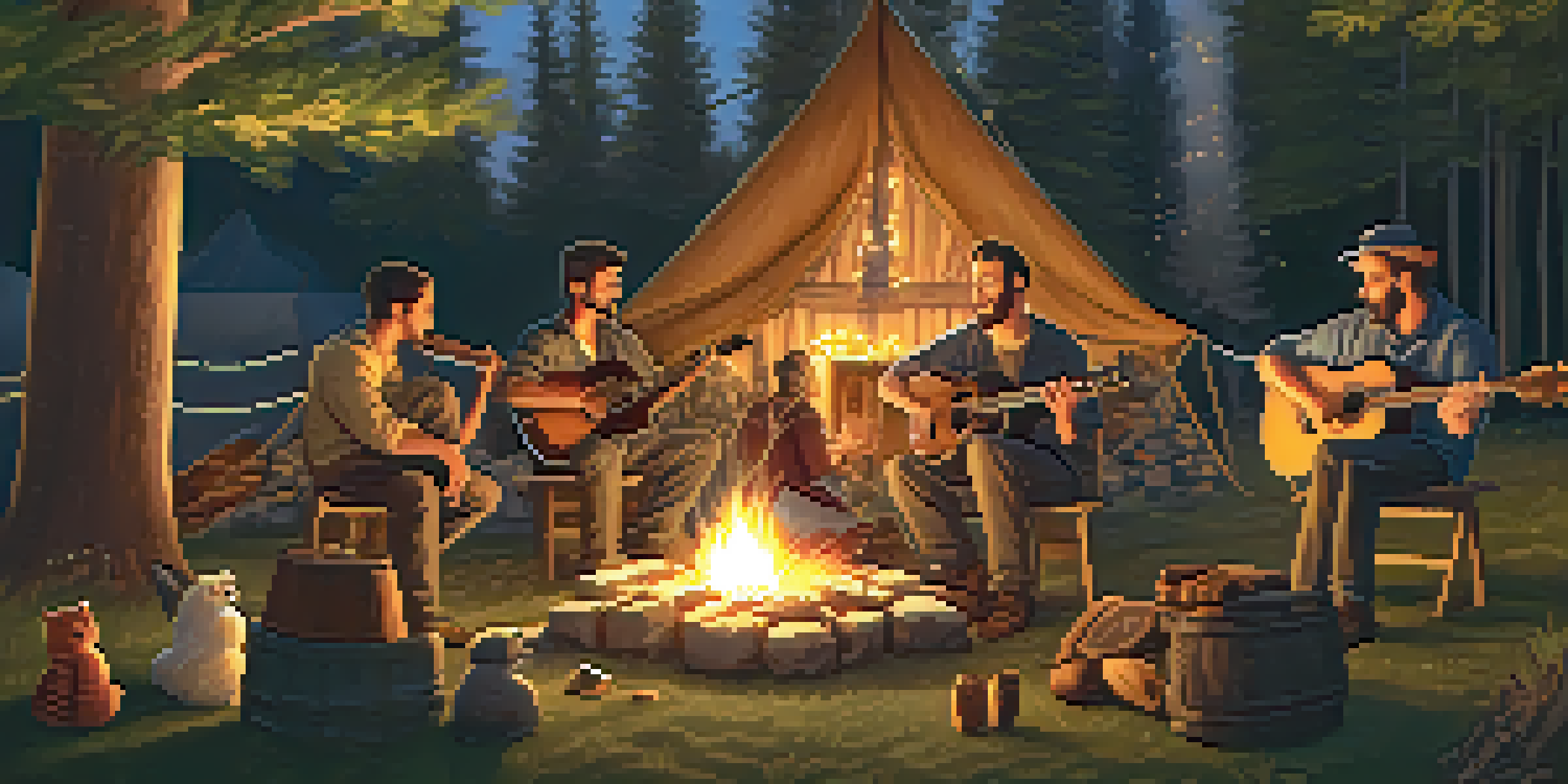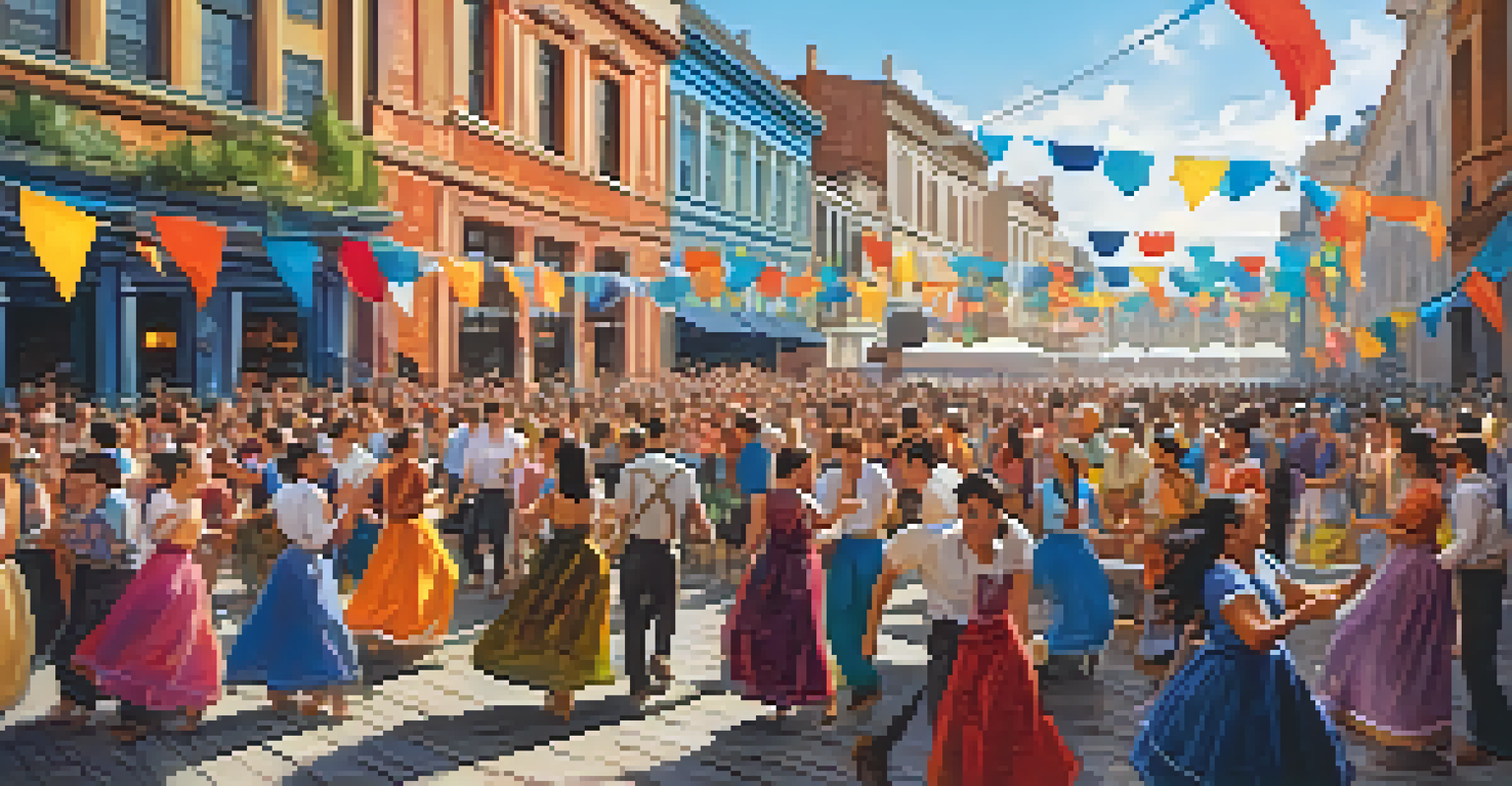The Evolution of Folk Music in the Digital Age

The Roots of Folk Music: A Brief Overview
Folk music has deep roots that often reflect the culture and stories of communities. Traditionally passed down through generations, it served as a way to preserve history and convey emotions. The melodies and lyrics often mirrored the daily lives, struggles, and celebrations of the people who created them.
Folk music is the voice of the people, carrying stories of their struggles and triumphs through melody and verse.
In many ways, folk music is a mirror of society, evolving alongside cultural shifts. Whether it's the labor songs of workers or the ballads of love, these tunes encapsulated the essence of their time. As we delve into its evolution, we can see how these age-old traditions adapted to the changing world.
Understanding the origins of folk music helps us appreciate its journey into modernity. It’s fascinating to see how local stories can resonate universally, creating connections across different cultures. This foundation is crucial as we explore how technology has influenced its contemporary forms.
The Impact of Technology on Folk Music Creation
With the advent of technology, the creation of folk music has transformed dramatically. Musicians now have access to an array of digital tools that allow for unprecedented creativity and experimentation. From recording software to virtual instruments, these innovations have opened up new avenues for artists to express themselves.

Moreover, technology has made it easier for musicians to collaborate across distances. Artists can now work together in real-time, regardless of their geographical locations, blending various styles and influences. This collaborative spirit enriches folk music, allowing it to evolve and adapt to contemporary tastes.
Folk Music Reflects Cultural Stories
Folk music serves as a mirror of society, preserving history and emotions while evolving alongside cultural shifts.
However, this digital transformation raises questions about authenticity. While technology has democratized music creation, it also challenges traditional definitions of what folk music is. Striking a balance between innovation and tradition becomes key in this new landscape.
Digital Platforms and Folk Music Distribution
In the past, folk musicians relied heavily on live performances and physical media to share their music. Today, digital platforms have revolutionized how folk music is distributed and consumed. Streaming services like Spotify and Apple Music have made it possible for artists to reach global audiences with just a click.
Music can change the world because it can change people.
Social media also plays a crucial role in promoting folk musicians. Platforms like Instagram and TikTok allow artists to share snippets of their songs and connect with fans in real-time. This direct engagement fosters a sense of community that mirrors the communal roots of folk music.
However, this shift comes with its own challenges. The oversaturation of music on these platforms can make it difficult for individual artists to stand out. Musicians must navigate this crowded space while staying true to their roots, which can be a delicate balancing act.
Revival and Preservation of Traditional Folk Music
As folk music evolves, there's a growing movement focused on reviving and preserving traditional forms. Many artists are actively working to keep historical songs alive, often reinterpreting them for modern audiences. This blend of old and new honors the past while making it relevant today.
Festivals and community gatherings dedicated to folk music play a vital role in this revival. These events provide a platform for both established and emerging artists to showcase their work, fostering a sense of belonging and continuity. They also serve as a reminder of the cultural significance of folk traditions.
Technology Transforms Music Creation
Digital tools and platforms have revolutionized how folk music is created and distributed, allowing for greater collaboration and wider reach.
By embracing both technology and tradition, musicians can create a dialogue between generations. This effort ensures that the stories and melodies of the past are not forgotten, but rather celebrated in new ways. The challenge lies in maintaining this balance while appealing to contemporary listeners.
The Role of Folk Music in Social Movements
Folk music has always been a powerful tool for social change, and this remains true in the digital age. Songs can inspire movements, raise awareness, and bring communities together in ways that few other art forms can. Many contemporary folk artists use their platforms to address pressing social issues, from climate change to social justice.
The accessibility of digital platforms amplifies these messages, allowing them to reach wider audiences than ever before. For example, songs addressing political issues can garner attention on social media, sparking conversations and mobilizing action. This ability to connect and inspire is a testament to the enduring power of folk music.
Moreover, the grassroots nature of folk music aligns beautifully with many social movements, which often rely on community support and participation. By harnessing the collective voice through song, folk artists can create a sense of solidarity that resonates deeply within their communities.
The Globalization of Folk Music in the Digital Era
The digital age has facilitated the globalization of folk music, allowing diverse cultures to interact and influence one another. Musicians can now draw inspiration from a myriad of global folk traditions, blending styles and sounds in innovative ways. This cross-pollination enriches the genre and creates a vibrant tapestry of musical expression.
For instance, an artist from the U.S. might incorporate African drumming patterns into their folk songs, creating a unique fusion that pays homage to different cultural heritages. Such collaborations not only broaden the scope of folk music but also foster understanding and appreciation among diverse communities.
Revival of Traditional Folk Music
There is a growing movement to revive and preserve traditional folk music, blending old and new to celebrate cultural heritage.
However, this globalization poses challenges regarding cultural appropriation. It's crucial for artists to approach these influences with respect and acknowledgment, ensuring that the original cultures are celebrated rather than exploited. Navigating these complexities is essential as folk music continues to evolve in a connected world.
The Future of Folk Music in a Digital World
Looking ahead, the future of folk music in a digital world is filled with possibilities and challenges. As technology continues to advance, artists will likely adapt in ways we can’t yet imagine, pushing the boundaries of the genre. This evolution may lead to new forms of expression that still honor the roots of folk traditions.
The ongoing dialogue between tradition and innovation will be key to shaping this future. As musicians experiment with new technologies while staying connected to their cultural narratives, they can create a dynamic and engaging folk music landscape. The challenge will be to maintain authenticity in a rapidly changing environment.

Ultimately, the resilience and adaptability of folk music suggest that it will continue to thrive. Whether through digital platforms or grassroots movements, the spirit of folk music will endure, reminding us of our shared humanity and the power of storytelling through song.